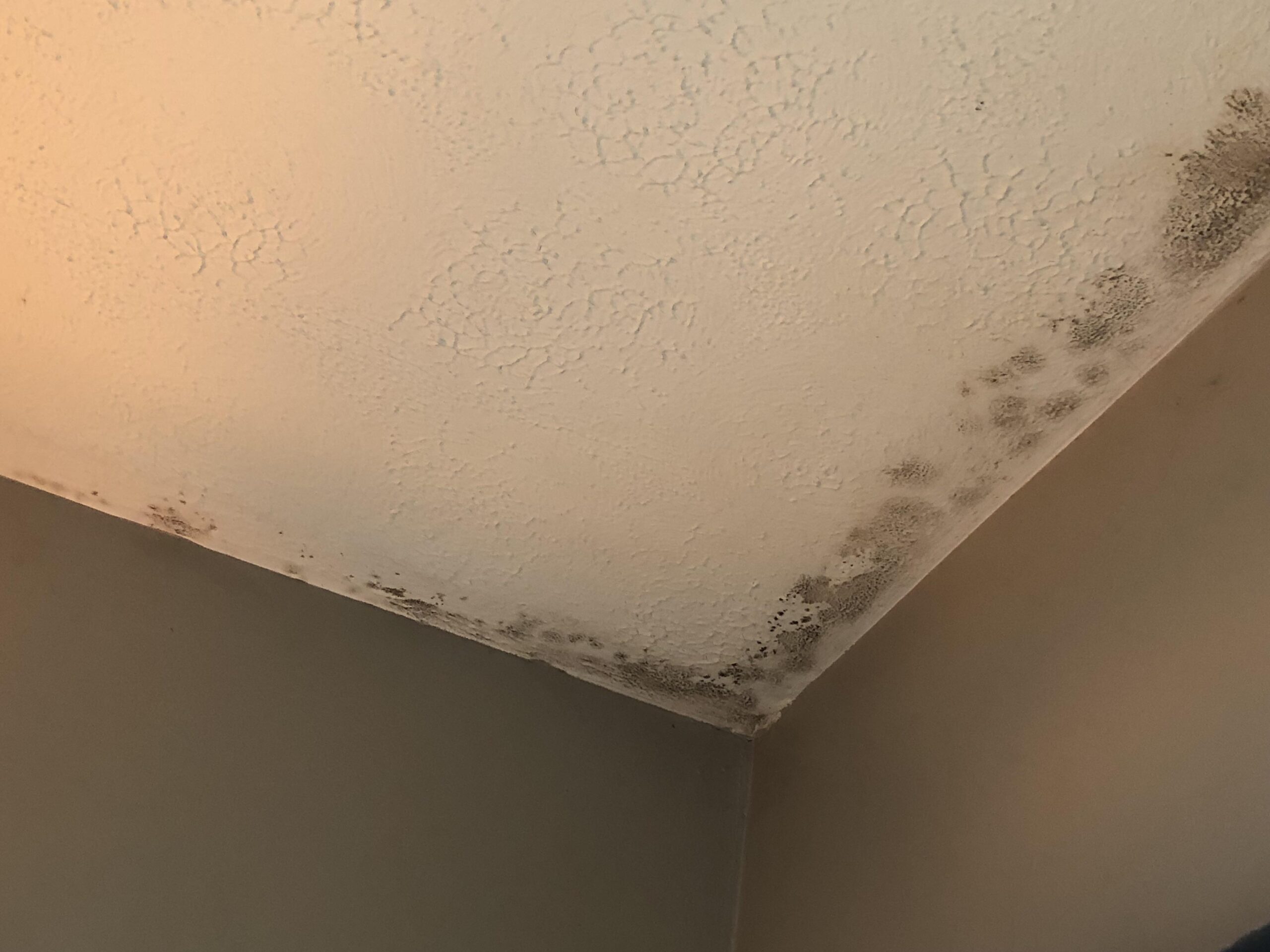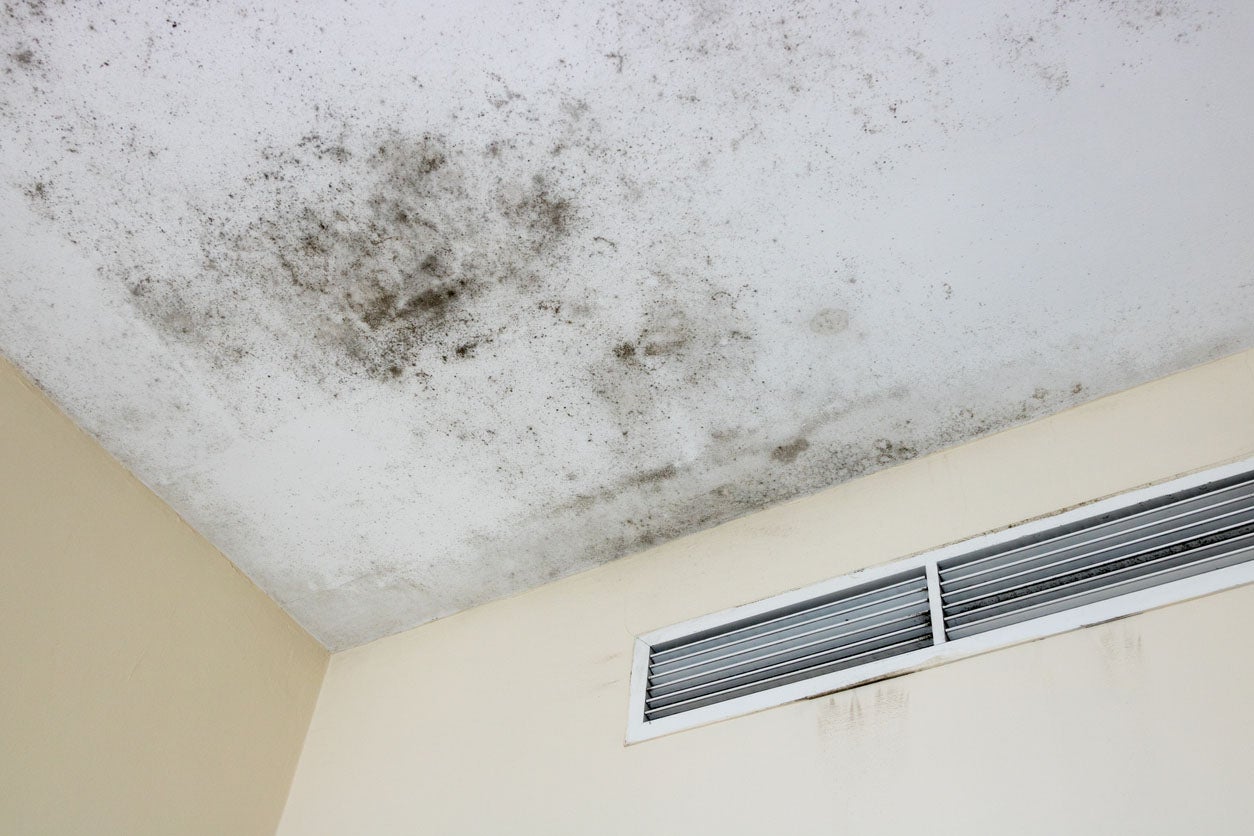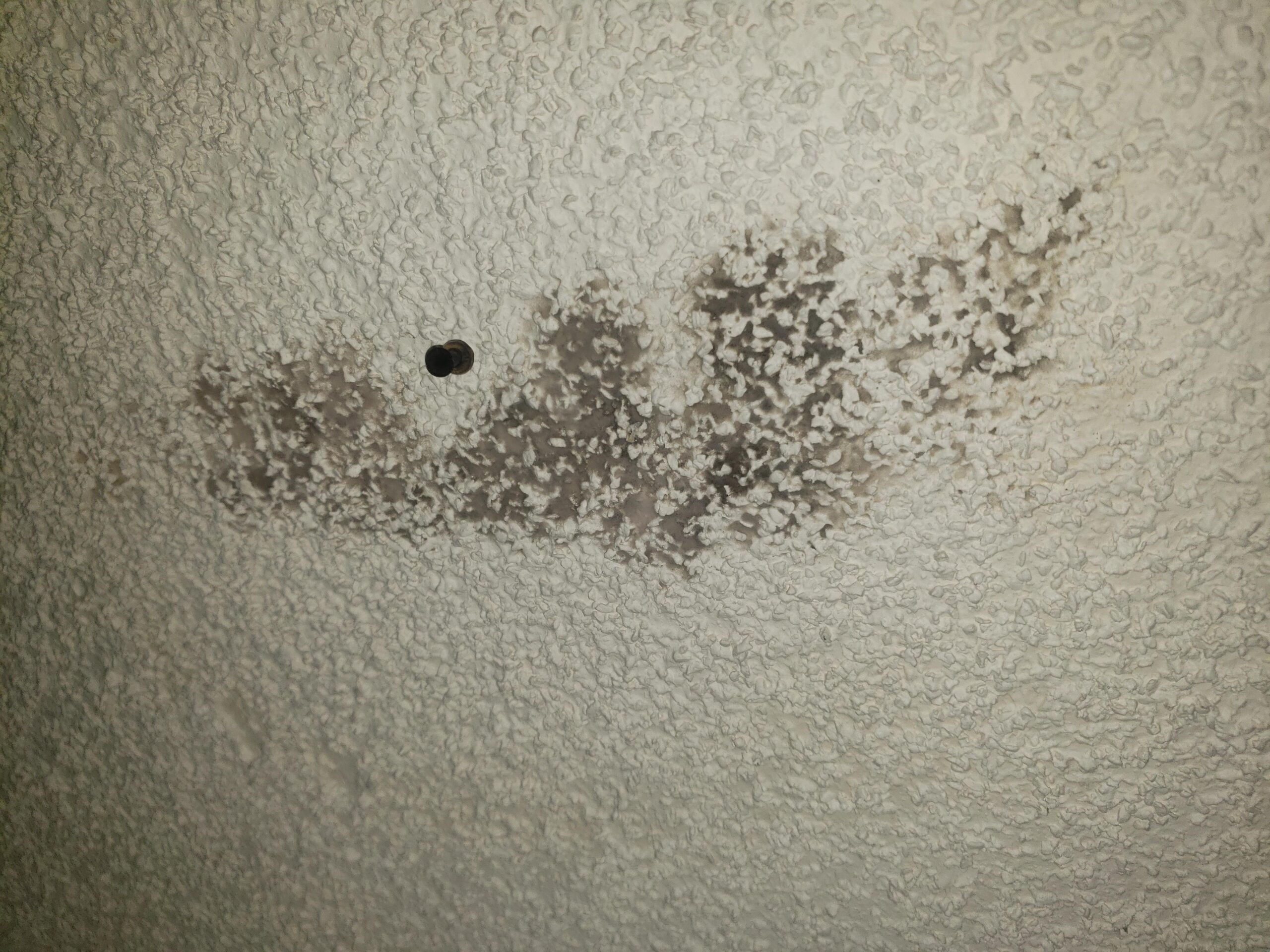
Why Does Mold Grow on Popcorn Ceilings?
Mold thrives in damp, humid environments, and popcorn ceilings are especially susceptible to moisture buildup. Whether from water damage, poor ventilation, or high indoor humidity, mold can take hold quickly on these textured surfaces. Here are the most common causes of mold growth on popcorn ceilings:
1. High Humidity
Rooms with high humidity, like bathrooms, kitchens, and laundry rooms, are prime spots for mold growth. Moisture in the air can settle on the textured surface of a popcorn ceiling, providing the ideal conditions for mold to grow. Without proper ventilation, the humidity can cause mold spores to multiply quickly.
2. Water Damage
If your home has experienced a roof leak, burst pipe, or other water damage, mold can easily develop on your popcorn ceiling. Water stains, discoloration, and peeling paint are common signs of water damage that can lead to mold growth. The textured surface of popcorn ceilings can trap moisture, making it harder for the area to dry out and encouraging mold growth.
3. Poor Ventilation
Inadequate ventilation can also contribute to mold growth on your popcorn ceiling. Bathrooms without exhaust fans, kitchens without range hoods, or rooms without proper airflow allow moisture to linger, creating the perfect environment for mold.
How to Remove Mold from a Popcorn Ceiling

Removing mold from a popcorn ceiling can be tricky due to the textured surface, but it’s not impossible. With the right tools and safety precautions, you can get rid of the mold and restore your ceiling. Follow these steps to safely remove mold from your popcorn ceiling:
| Step | What to Do |
|---|---|
| 1. Protect Yourself and Your Space | Before you start cleaning, protect yourself by wearing gloves, goggles, and a mask to avoid inhaling mold spores. Cover the floor and furniture with plastic sheeting or drop cloths to catch any falling debris from the ceiling. Ensure the room is well-ventilated by opening windows or running a fan. |
| 2. Mix a Cleaning Solution | Prepare a mold-killing cleaning solution using a mixture of one part white vinegar and one part water. You can also use a commercial mold remover if preferred. Avoid using bleach on popcorn ceilings, as it can damage the texture and may not fully penetrate the porous surface to kill all the mold spores. |
| 3. Apply the Cleaning Solution | Use a spray bottle to lightly mist the moldy areas of the popcorn ceiling with the cleaning solution. Avoid soaking the ceiling, as too much moisture can cause the texture to peel or fall off. Let the solution sit for about 10-15 minutes to break down the mold. |
| 4. Gently Clean the Mold | After the solution has had time to work, use a soft brush or sponge to gently scrub the affected areas. Be careful not to damage the texture of the ceiling while cleaning. If the mold is stubborn, you may need to repeat the process. |
| 5. Rinse and Dry the Area | Once the mold is removed, lightly rinse the ceiling with clean water using a spray bottle. Use fans or a dehumidifier to dry the area thoroughly to prevent the mold from returning. Ensure the room is well-ventilated during the drying process. |
When to Call a Professional for Mold Removal
If the mold on your popcorn ceiling is extensive or has spread to other areas of your home, it’s time to call a professional mold remediation service. Large mold infestations can pose serious health risks, especially if the mold is black mold (Stachybotrys). Mold experts can safely remove the mold, repair any damage, and help prevent it from coming back.
If you suspect a larger mold problem, Citywide Mold Mitigation offers comprehensive mold remediation services to help protect your home and health.
How to Prevent Mold on Popcorn Ceilings

Once you’ve removed the mold from your popcorn ceiling, taking steps to prevent it from returning is essential. Here’s how to keep mold away for good:
1. Improve Ventilation
Proper ventilation is key to preventing mold growth in humid areas. Install exhaust fans in bathrooms and kitchens, and make sure your home has adequate airflow. Use dehumidifiers in damp areas like basements or bathrooms to reduce humidity levels.
2. Fix Leaks Immediately
Address any roof leaks, plumbing issues, or water damage as soon as possible. Water damage is one of the leading causes of mold growth, and quickly repairing leaks can prevent moisture from settling into your ceiling.
3. Use Mold-Resistant Paint
After cleaning the mold from your ceiling, consider applying mold-resistant paint or primer to prevent future growth. These products are designed to resist mold and mildew, making them ideal for rooms prone to moisture, like bathrooms or kitchens.
FAQ
| Question | Answer |
|---|---|
| Is mold on popcorn ceilings dangerous? | Yes, mold on popcorn ceilings can pose health risks, especially for individuals with allergies or asthma. It can also indicate a moisture problem that could lead to more serious damage if not addressed. |
| Can I use bleach to remove mold from my popcorn ceiling? | It’s not recommended to use bleach on popcorn ceilings, as it can damage the texture and may not effectively kill all the mold spores. White vinegar or a commercial mold remover is a safer option. |
| How do I know if mold is growing behind my popcorn ceiling? | Signs of hidden mold include a musty smell, discoloration, and peeling paint. If the mold has spread beyond the surface, it’s best to call a professional for mold inspection and removal. |
| What is the best way to prevent mold on popcorn ceilings? | The best way to prevent mold is to reduce moisture by improving ventilation, fixing leaks, and using mold-resistant paint. Regularly cleaning and drying high-humidity areas also helps. |
| When should I call a professional for mold removal? | If the mold covers a large area, is toxic black mold, or has spread to other parts of your home, it’s best to contact a professional mold removal service for safe and effective remediation. |
If you’re struggling with mold on your popcorn ceiling or anywhere else in your home, contact Citywide Mold Mitigation for expert mold removal services today.

